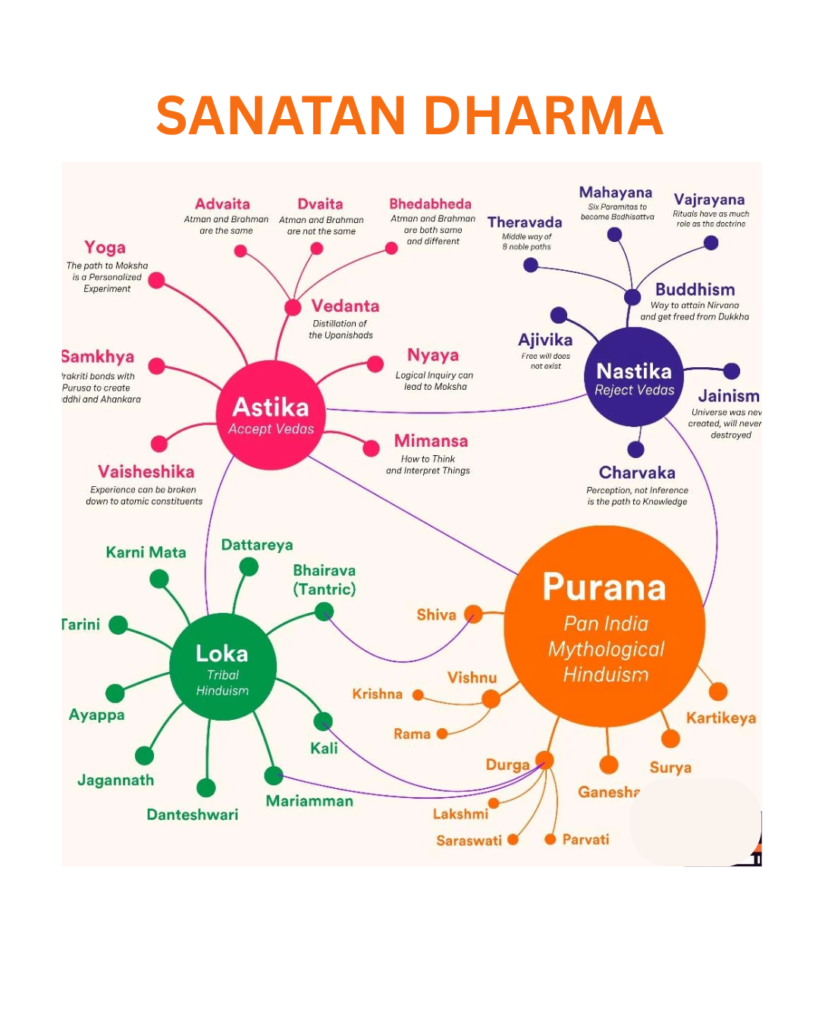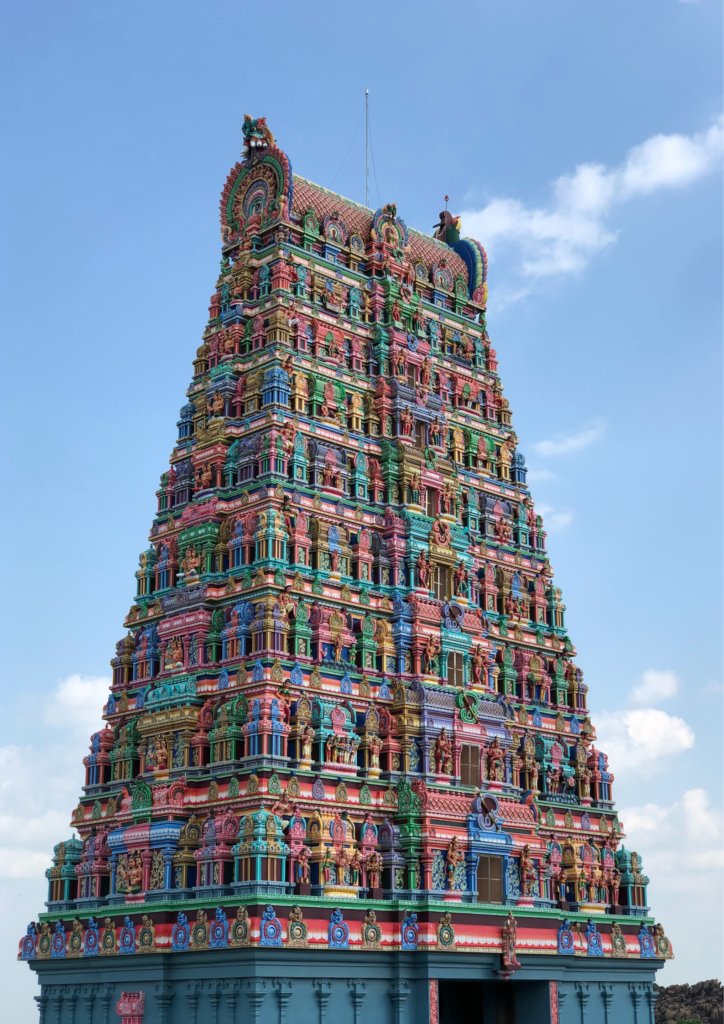In the vast and ancient landscape of Sanatan Dharma, temples have stood not only as spiritual sanctuaries but also as vibrant centers of learning. These sacred spaces are far more than architectural wonders or places of ritual—they are temples as schools, silently imparting values, philosophy, and spiritual discipline across generations.

From the intricate carvings on temple walls to the meticulously performed rituals, every element of a traditional Hindu temple is designed to educate both the devotee and the observer.
Historically, temples in India served as hubs of community life, culture, and wisdom. According to a report by the Archaeological Survey of India, many temples dating back to the 8th century functioned as institutions where subjects such as Sanskrit, astronomy, Ayurveda, and the Vedas were taught.
The Brihadeshwara Temple in Thanjavur, for example, had an attached learning center that housed over 400 students and teachers during the Chola dynasty.
In today’s fast-paced, digitally driven world, it is essential to recognize temples as schools that continue to play a subtle yet powerful role in shaping the moral and cultural consciousness of society.
They teach not through chalk and blackboard, but through sacred geometry, collective rituals, storytelling, and daily practices steeped in thousands of years of wisdom. These “living schools” have helped preserve the timeless values of dharma (righteousness), bhakti (devotion), and jnana (knowledge).
By exploring how temples as schools function within the framework of Sanatan Dharma, we not only reconnect with our heritage but also gain tools to navigate modern challenges through ancient insight. As this blog unfolds, you’ll see how these sacred spaces are silently shaping minds and souls, just as they have for millennia.
Temples as Schools in Stone: Exploring the Educational Role of Temple Architecture
For centuries, Indian temples have stood not only as places of worship but also as enduring symbols of learning, culture, and civilization. Often called temples as schools, these ancient marvels of architecture were more than just religious hubs—they were living universities carved in stone.
A Silent Curriculum in Carvings
The architecture of ancient Indian temples, from the majestic Brihadeeswara Temple in Tamil Nadu to the intricate Khajuraho group in Madhya Pradesh, showcases a detailed syllabus engraved in their very stones.
From depictions of yoga postures and scientific diagrams to stories from epics like the Ramayana and Mahabharata, every wall taught something. According to UNESCO, temples like those in Hampi were “multifunctional institutions for education, art, and economy” during the Vijayanagara Empire (14th–17th centuries CE).
These temples as schools taught visual literacy through iconography. Visitors learned dharma (righteous living), astronomy, Ayurveda, and moral lessons through narrative panels and sculptures without needing written texts.
In fact, a study from the Archaeological Survey of India notes that over 60% of temple sculptures serve pedagogical purposes.
Engineering as Education
Temple construction itself was a deep educational process. Students of architecture and sculpture learned measurement, geometry, metallurgy, and acoustic science through temple design.
The Konark Sun Temple is aligned so precisely with the sunrise that it shows a sophisticated understanding of solar patterns—an architectural lesson encoded in stone.

Rituals & Daily Life Practices
The spiritual life of ancient India revolved around temples—not just for prayer but for daily learning. These sacred spaces were closely integrated with the rhythm of everyday life, subtly transforming temples as schools where knowledge was passed through rituals, routines, and practices.
Learning Through Rituals
Every temple ritual—from morning abhishekam (bathing the deity) to evening aarti—was a lesson in discipline, timing, and spiritual symbolism.
Children growing up around temples absorbed lessons about time management, hygiene, sound therapy (via bells and mantras), and the deeper meanings of offerings through participation.
According to a 2021 survey by the Indian Institute of Culture and Heritage, over 70% of rural elders report learning ethical conduct and daily structure from temple routines in their youth.
For example, the pujas (rituals) often represent cosmic events, and participants learn the connection between the microcosm (individual life) and macrocosm (the universe). This makes temples as schools where cosmic philosophy becomes part of daily action.
Transmission of Values
Temples played a powerful role in teaching moral values and social responsibilities. Recitations of stories like the Bhagavad Gita, Puranas, and Itihasas during community gatherings taught patience, honesty, and empathy.
Rituals like anna daanam (food donation) and seva (selfless service) turned temples into moral training centers, reinforcing the Indian ethos of dharma (duty).
Such temples as schools used repetition, observation, and oral tradition to instill lifelong habits. Festivals became interactive workshops—where the act of celebrating meant learning culture, art, and harmony in practice.
Daily Disciplines as Education
The rituals also served as practical education in health, sound, and environmental science. Lighting diyas (lamps) with ghee promoted respiratory health; using natural incense cleansed the air.
Chanting mantras was a form of sound healing. These rituals, observed regularly, offered a kind of curriculum in holistic living—framing temples as schools for well-being and sustainability.
Spiritual Education & Priest Training
Long before formal universities existed, temples were central to India’s educational system, especially in the realm of spiritual development. Functioning as temples as schools, these sacred spaces nurtured not just devotion but also intellectual inquiry, scriptural study, and priestly training with remarkable depth and discipline.
Systematic Training for Priests
Becoming a temple priest (archaka or purohit) wasn’t merely a family tradition—it required years of rigorous training.
Young aspirants were initiated into gurukuls located within or near temple complexes. Here, they mastered Vedas, Upanishads, Smritis, temple rituals, Sanskrit grammar, astrology (jyotisha), and even temple accounting.
The Tirumala Tirupati Devasthanam (TTD), one of the largest temple trusts in India, still runs Veda Patasalas where over 1,200 students study under ancient gurukul models. These institutions carry forward the tradition of temples as schools that blend spiritual rigor with intellectual development.
Holistic Spiritual Curriculum
The curriculum for future priests and scholars was deeply interdisciplinary. They studied the science of mantras (mantra shastra), meditation techniques, temple architecture (vastu shastra), and even herbal medicine (ayurveda).
According to a report by the Indira Gandhi National Centre for the Arts, such training could take 10 to 15 years, reflecting a level of expertise akin to modern professional degrees.
This system also ensured that spiritual leaders were not just ritual performers but also guides, teachers, counselors, and community advisors—making temples as schools centers for spiritual and social leadership.
Preserving Oral Knowledge Traditions
Much of the spiritual training relied on oral tradition. Through precise chanting of Vedic hymns, students learned not only content but cadence, breath control, and memory enhancement.
A 2019 study from the Indian Journal of Cognitive Science showed that Vedic recitation training improves verbal memory and neural plasticity, highlighting how these temples as schools provided a cognitive edge beyond spiritual learning.
In this way, temples weren’t merely places of worship but dynamic institutions of knowledge where the sacred and scholarly merged seamlessly.
Community Outreach & Ethical Governance
Ancient Indian temples were not isolated centers of spirituality—they were dynamic institutions that shaped the civic, moral, and economic life of the society around them. Operating effectively as temples as schools, they played a crucial role in community outreach, ethical administration, and social welfare long before modern governance systems emerged.
Centers of Social Organization
Temples often acted as administrative hubs for villages and towns. Inscriptions found at temples like the Brihadeeswara Temple (Tamil Nadu) and the Jagannath Temple (Odisha) detail how temple councils managed land distribution, dispute resolution, and resource allocation.
These records, some dating back to the 10th century CE, illustrate how temples as schools taught principles of just leadership, transparency, and economic fairness.
The temple was also a training ground for future community leaders. Youngsters observed how decisions were made by temple elders and learned governance rooted in Dharma (righteousness), making it a live school of civic ethics.
Charity as a Civic Duty
Temples served as community relief centers, distributing food, clothing, and shelter during droughts or natural disasters. Institutions like the Annapoorna Mandir in Varanasi still follow the age-old tradition of feeding thousands daily.
These practices turned temples as schools that taught seva (selfless service), charity, and social responsibility through action rather than lectures.
A study conducted by the Indian Council of Philosophical Research (ICPR) shows that nearly 65% of temple-based charity initiatives historically had long-term community development goals like education, health care, and sustainable agriculture.
Ethical Framework for Governance
Priests and temple scholars were often consulted by kings and local rulers on ethical dilemmas and policy decisions.
Their advice, grounded in scriptures like the Manusmriti and Arthashastra, shaped justice systems that valued both individual rights and social harmony. Thus, temples as schools also functioned as ethical think tanks—imparting codes of conduct and moral reasoning to those in power.
Their influence ensured that governance was not just about power but about responsibility and righteousness—an approach modern systems are only beginning to rediscover.
Transmitting Values Across Generations
In a civilization as ancient and diverse as India’s, the preservation and transmission of core values—like respect for nature, truthfulness, non-violence, duty, and family honor—were not left to chance.
Temples played a central role in this process, acting as living institutions that embodied the wisdom of generations. Functioning as temples as schools, they ensured that timeless ideals were passed down through experience, stories, and sacred traditions.
Cultural Storytelling as Value Education
Through elaborate carvings, murals, and sculptures, temples brought epics like the Ramayana and Mahabharata to life—making moral lessons accessible to all, even to the illiterate.
These visuals served as generational textbooks. Children, sitting beside elders, learned the difference between right and wrong, bravery and cowardice, dharma and adharma—not from books, but from their very environment.
A 2020 cultural anthropology study by Banaras Hindu University found that 78% of rural Indian elders attribute their ethical learning and cultural identity to temple visits and storytelling sessions held in temple courtyards. These statistics reinforce how deeply temples as schools impacted generational learning.
Festivals as Educational Tools
Temple-based festivals weren’t just rituals—they were annual public lessons in gratitude, unity, and ecological awareness.
Holi taught forgiveness, Diwali emphasized victory of light over darkness, and Janmashtami reinforced divine play and faith. Every action in these festivals, from preparing prasadam to participating in processions, had a deeper lesson embedded in it.
By engaging people of all ages, these festivals helped temples as schools function as intergenerational classrooms, where elders taught and youth absorbed values organically.
Role Modeling and Continuity
Priests, elders, dancers, and even temple musicians acted as living role models. Children learned by watching how they spoke, prayed, served, and lived.
The continuity of traditions—be it chanting morning shlokas, practicing classical dance, or observing fasts—created strong family and societal bonds.
In this way, temples as schools were not merely transmitters of religious doctrine but vessels of a civilizational legacy—where spirituality and everyday ethics were inseparably woven into the lives of millions.
Modern Adaptations: Evolving Living Schools
While the traditional role of temples as centers of education has evolved, their core function—as temples as schools—continues in powerful new ways in the modern era. Today, temples are embracing contemporary tools, technologies, and outreach programs to continue their legacy of cultural and spiritual education.
Revival Through Cultural Programs & Heritage Classes
Many temples now conduct weekend classes on Sanskrit, Vedic mathematics, classical dance, music, and philosophy.
Institutions like the Chinmaya Mission and ISKCON have integrated temple visits with structured value education programs for children and youth. The Akshardham temple in Delhi, for instance, hosts over 5,000 school students monthly for guided learning tours—blending ancient wisdom with modern pedagogy.
Through such initiatives, temples as schools are not just reviving tradition but also making it relevant to modern learners.
Digital Platforms for Global Learning
Temples are now using websites, YouTube channels, and mobile apps to conduct live pujas, host scripture-reading sessions, and teach spiritual values across borders.
For example, the Sringeri Sharada Peetham runs an online Veda Patashala, reaching students globally. These digital platforms allow temples as schools to extend their influence far beyond physical boundaries—making ancient knowledge accessible to urban youth and the diaspora alike.
A 2023 report from NITI Aayog noted that over 200 major temples across India have adopted digital education tools, signifying a conscious shift toward global spiritual literacy.
Temples and Sustainable Living Education
Modern temples are also educating communities on sustainability—drawing inspiration from ancient practices.
From zero-waste temples like the Golden Temple in Amritsar to eco-conscious temples like the Meenakshi Temple in Madurai, lessons in environmental ethics are once again being embedded in temple operations.

These practices reinforce the idea of temples as schools, teaching harmony with nature through example, not just sermons.
Conclusion
From intricately carved sanctuaries to bustling centers of community life, Indian temples have always been more than places of prayer—they have been timeless universities, ethical compasses, and hubs of social transformation.
Across centuries, temples as schools have taught through architecture, rituals, festivals, spiritual training, and community service—offering a holistic education that shaped both the individual and society.
In today’s fast-paced, digitally driven world, this ancient model offers a profound reminder: true learning is not limited to textbooks or classrooms. It is experiential, value-driven, and rooted in culture.
As modern temples continue to evolve, embracing technology and sustainability while honoring tradition, they reaffirm their role as living schools—eternal sanctuaries where generations still come to learn, grow, and awaken.

